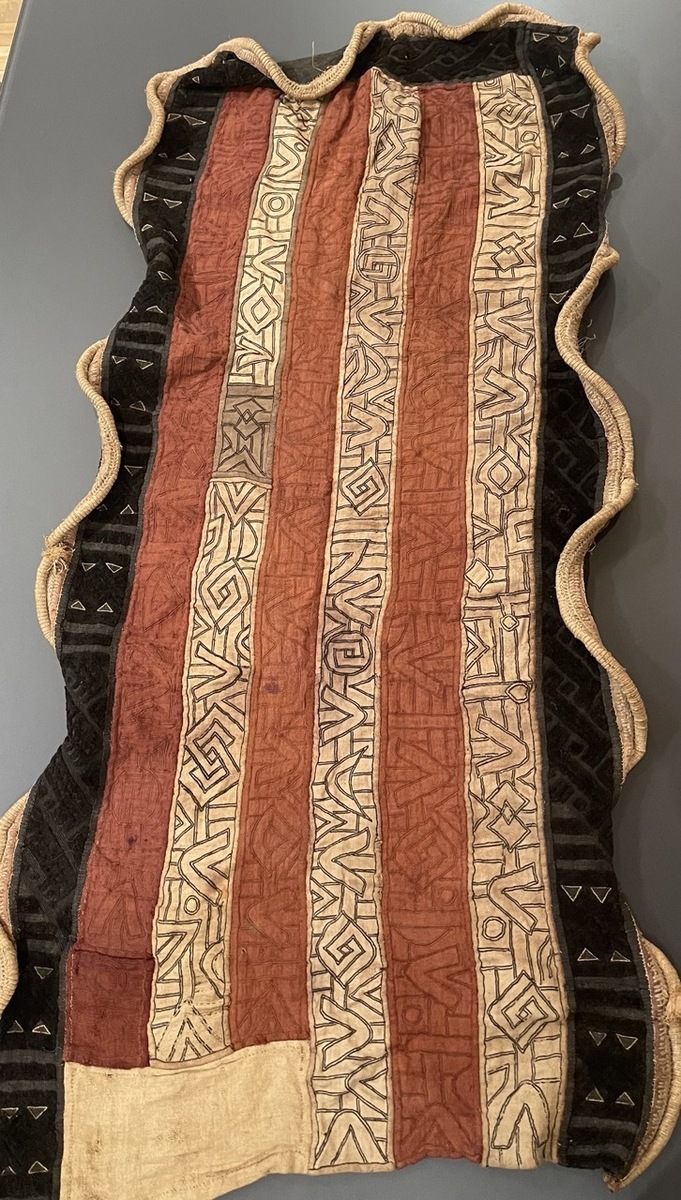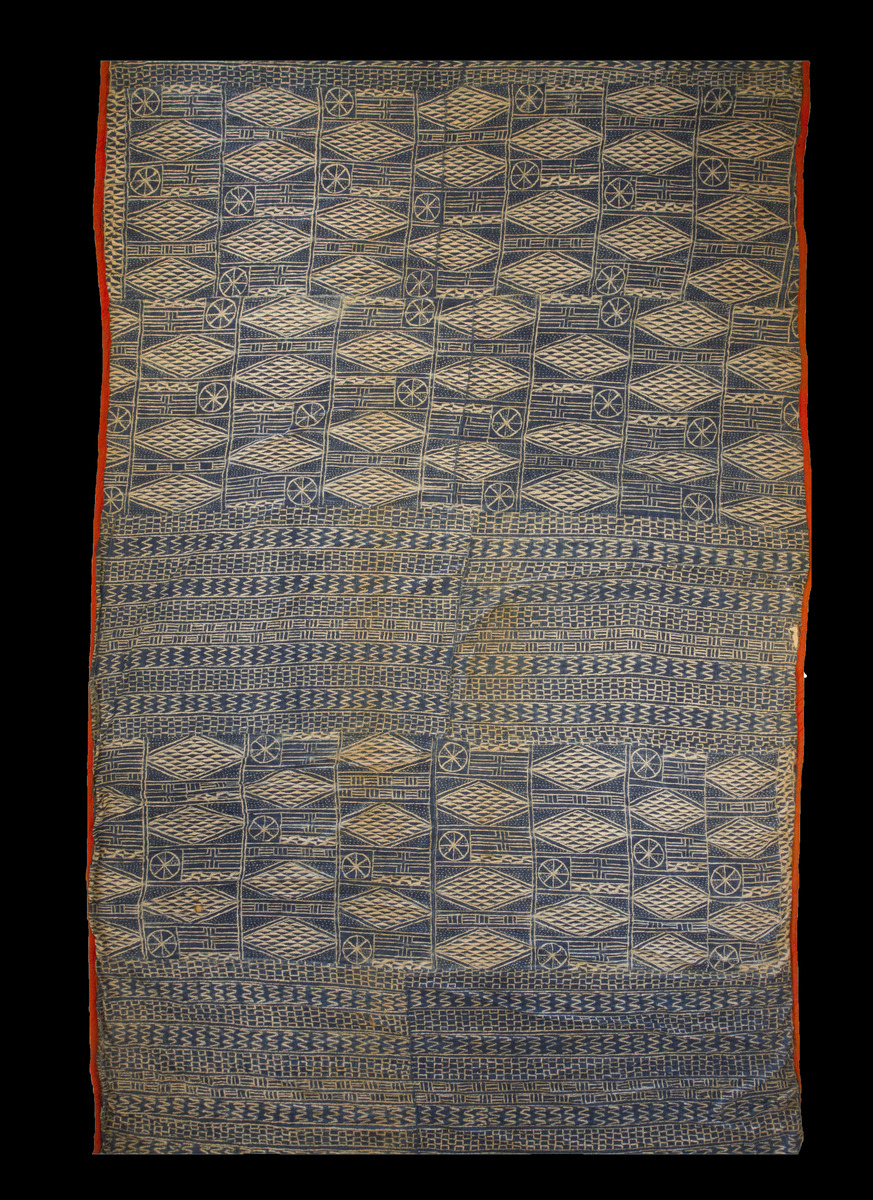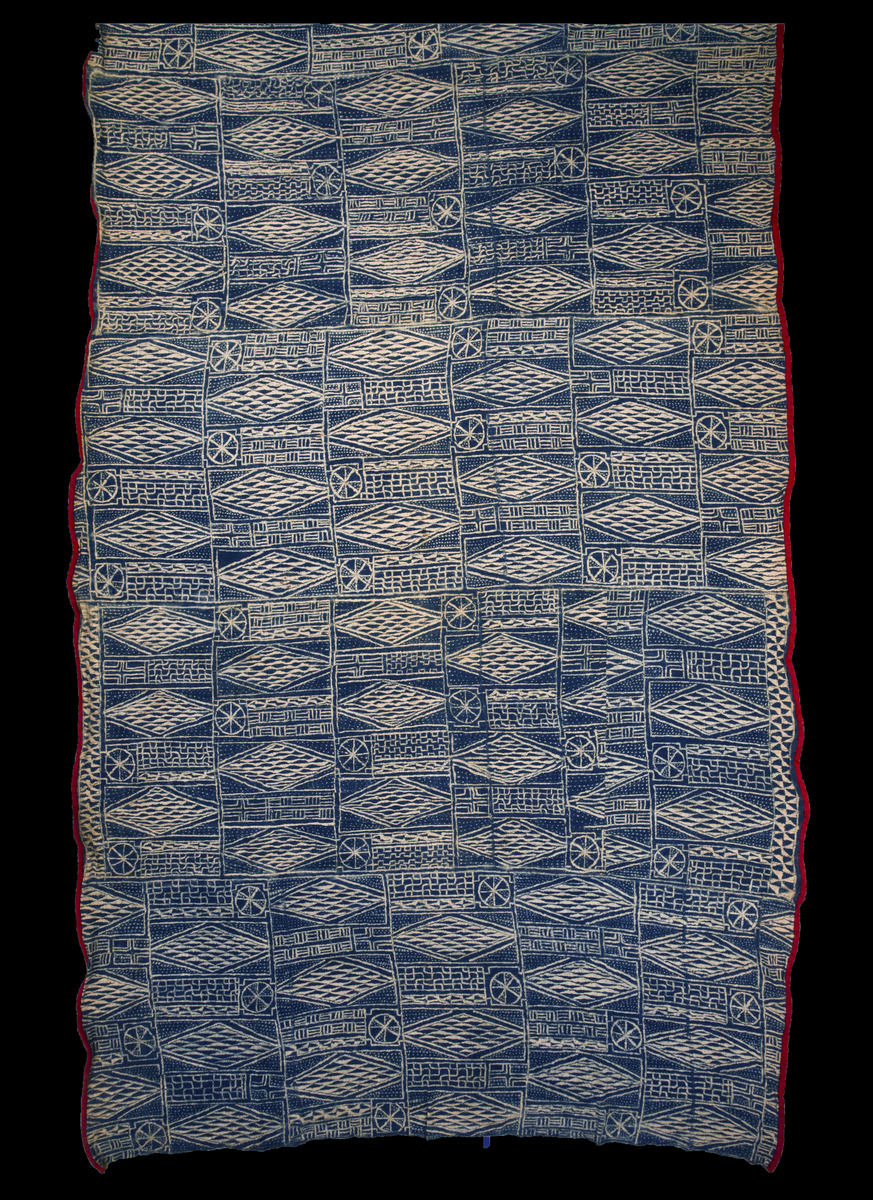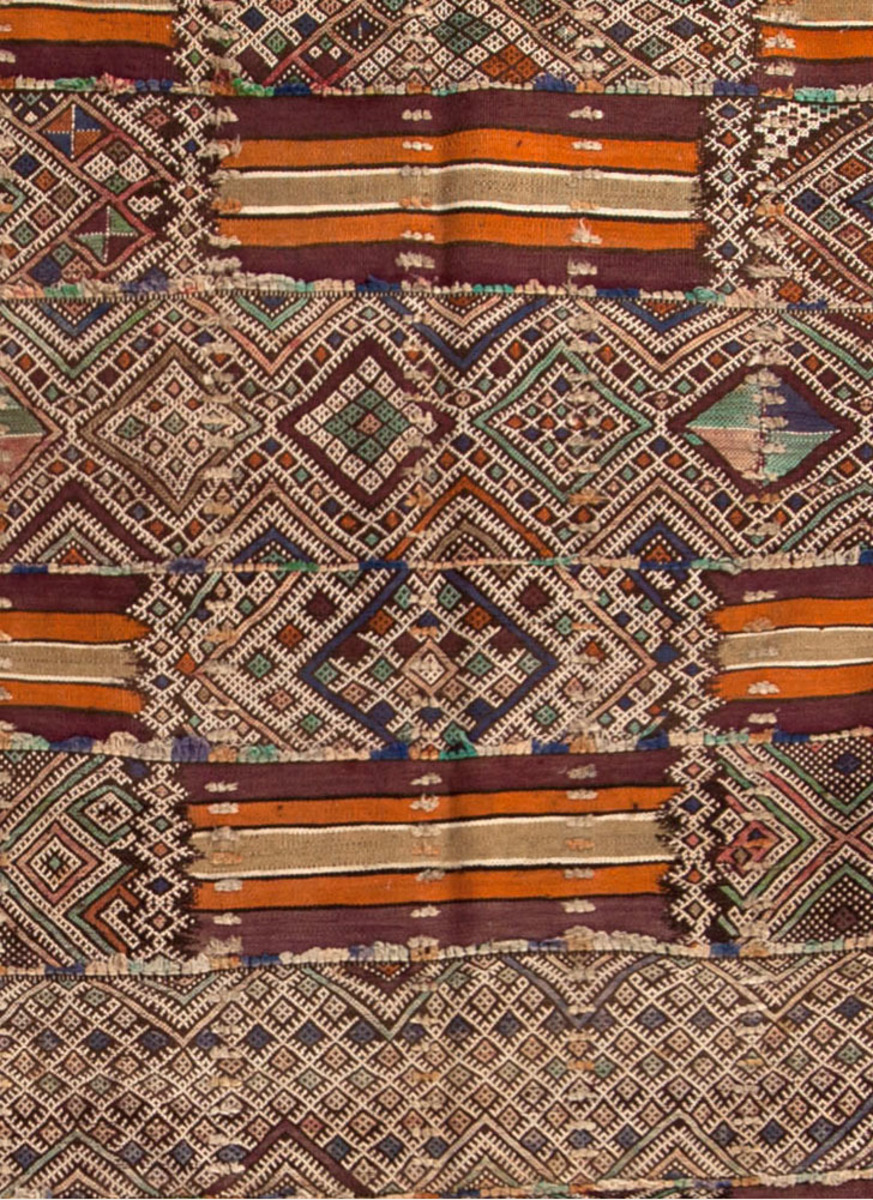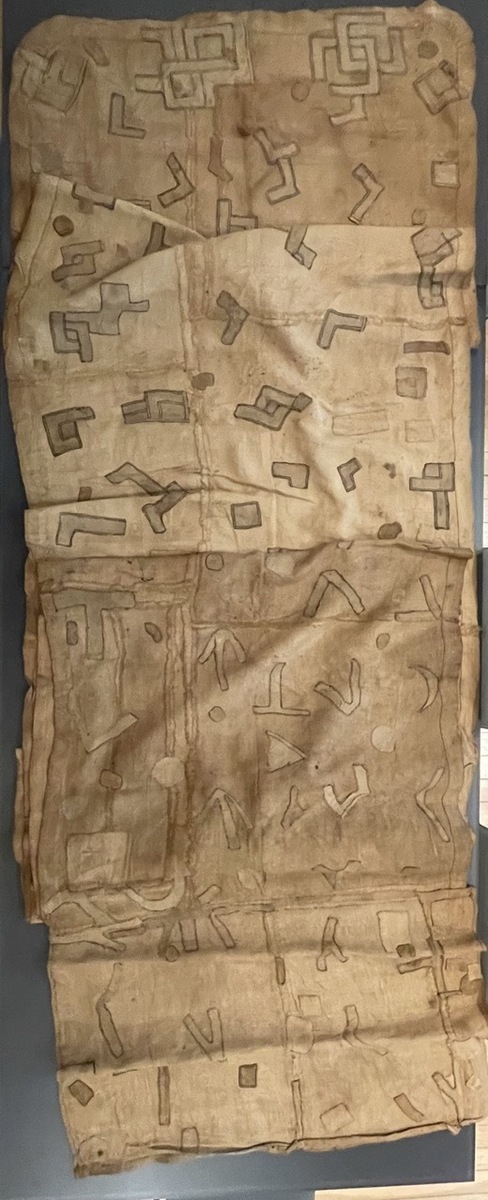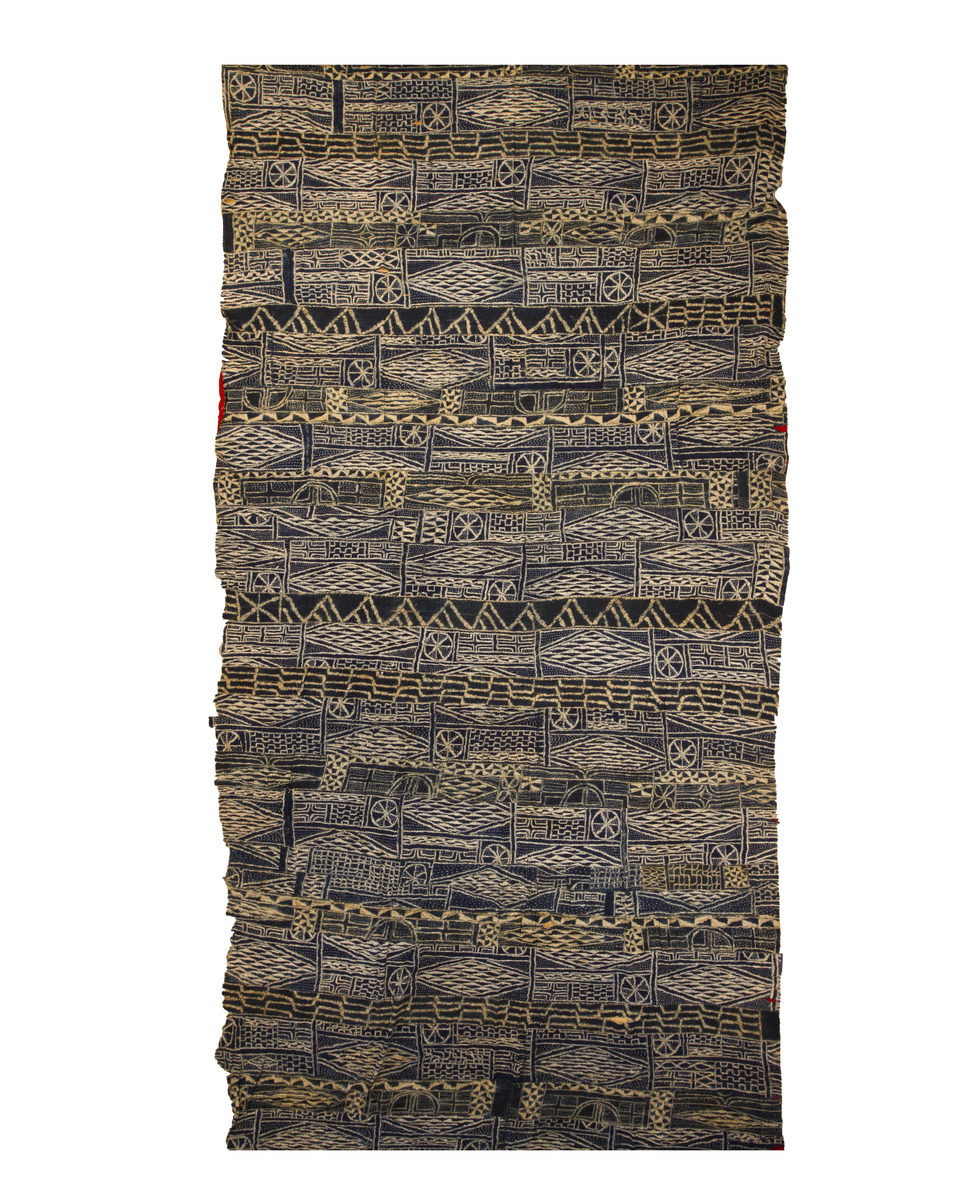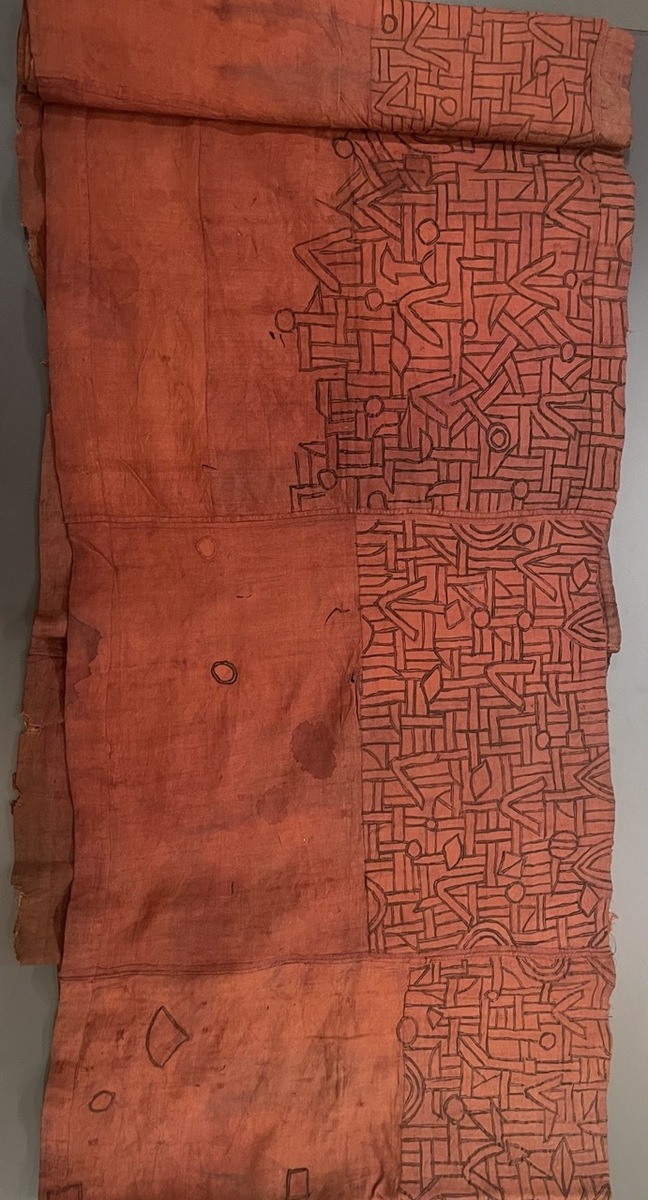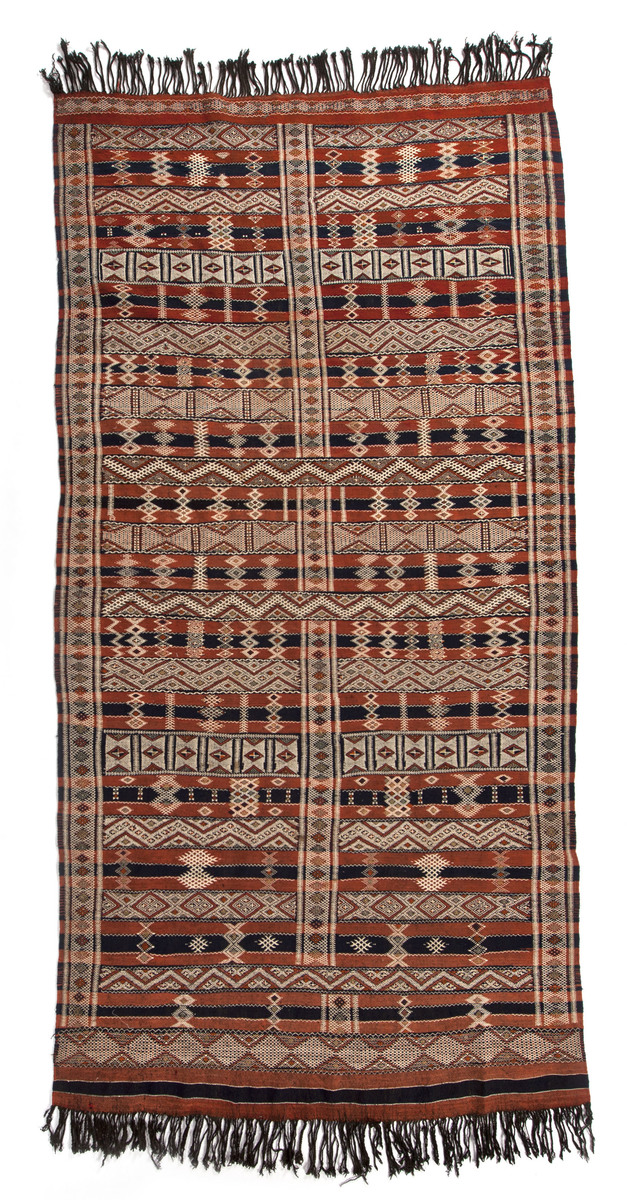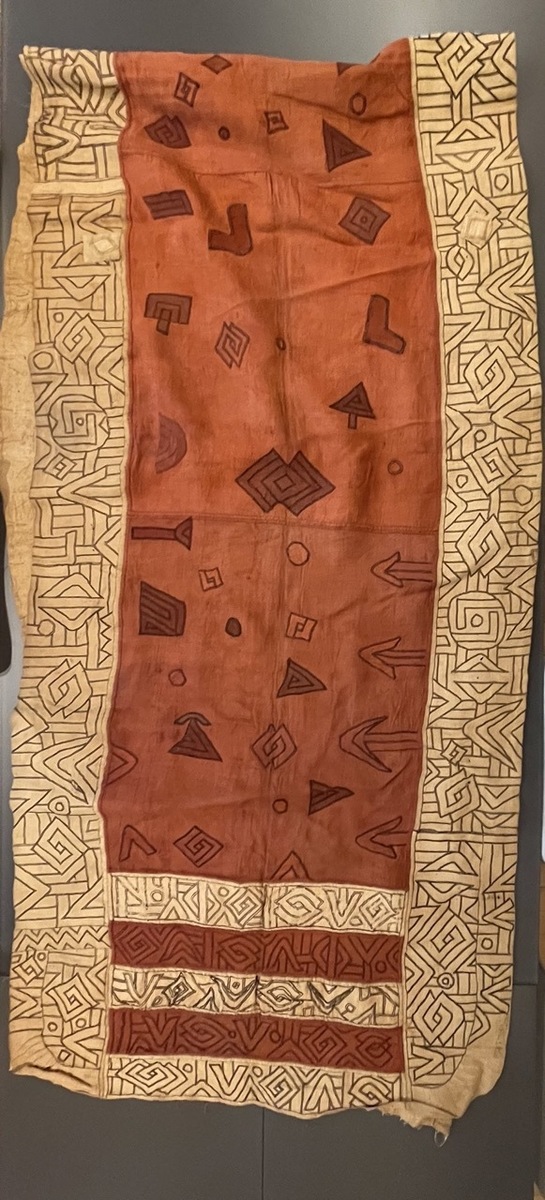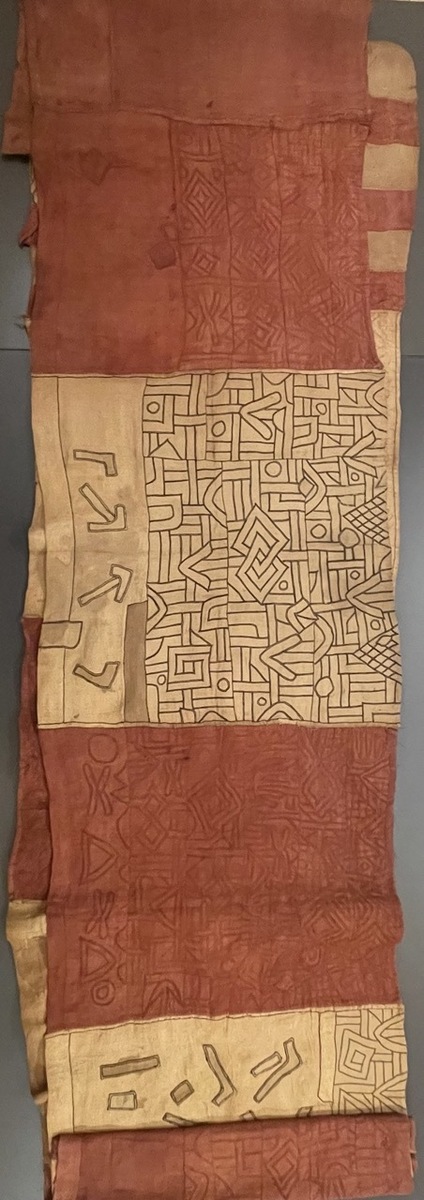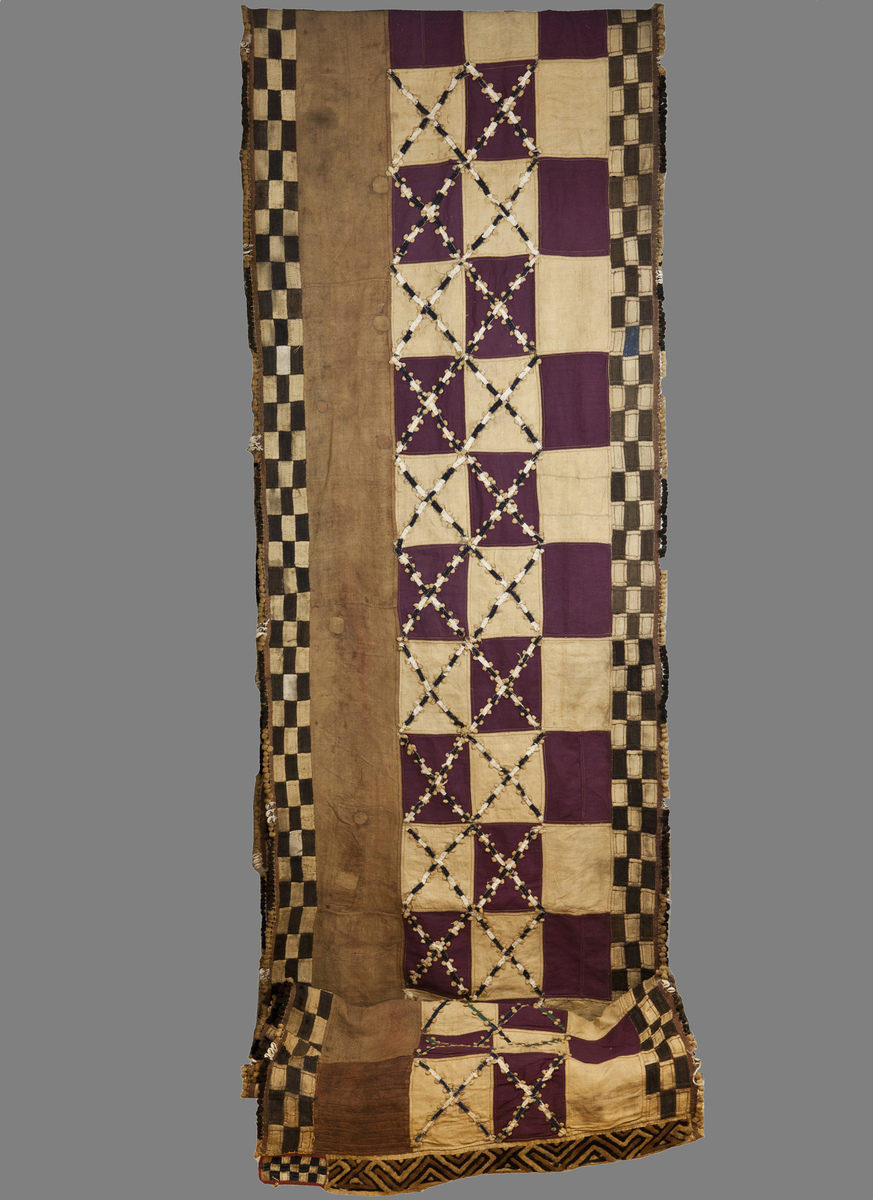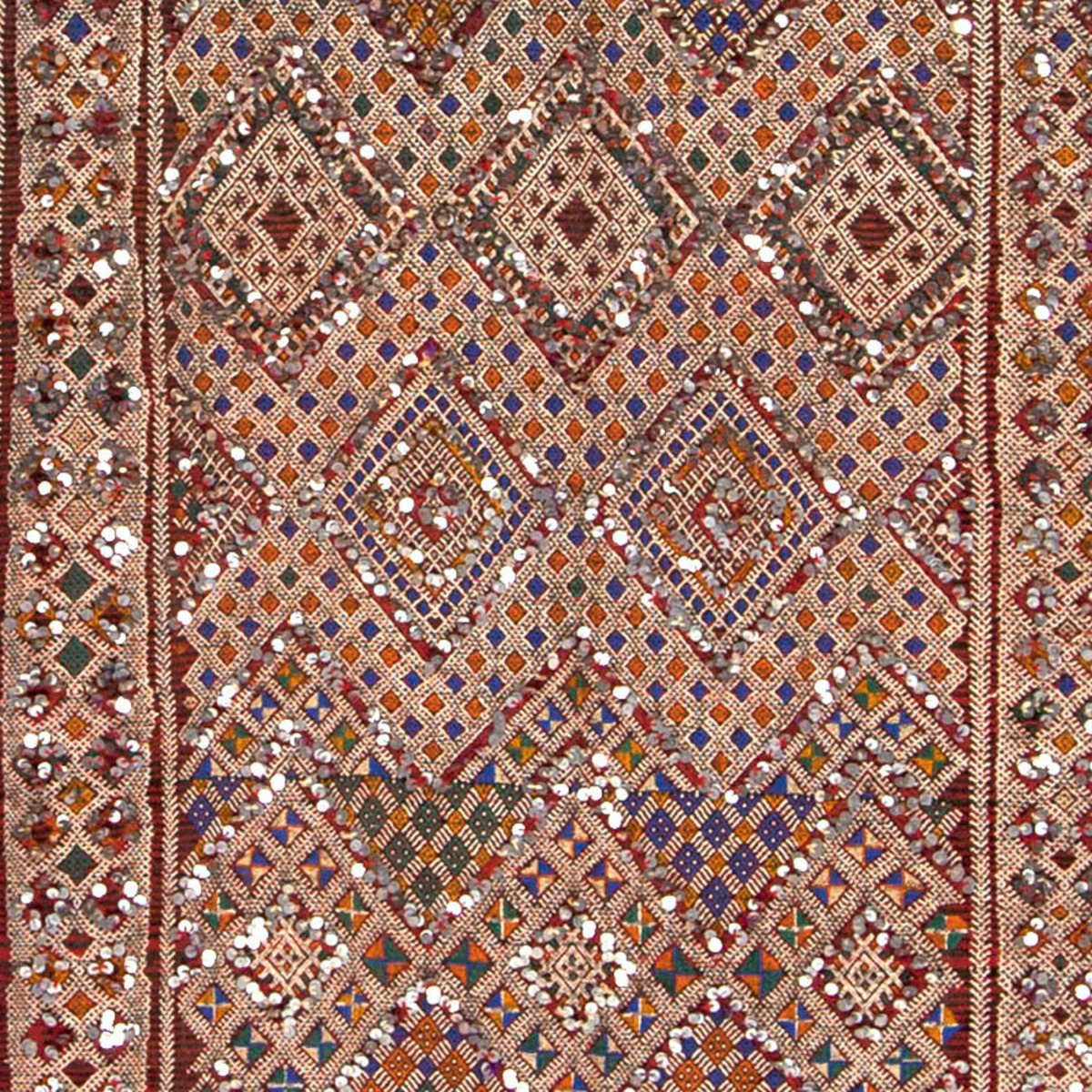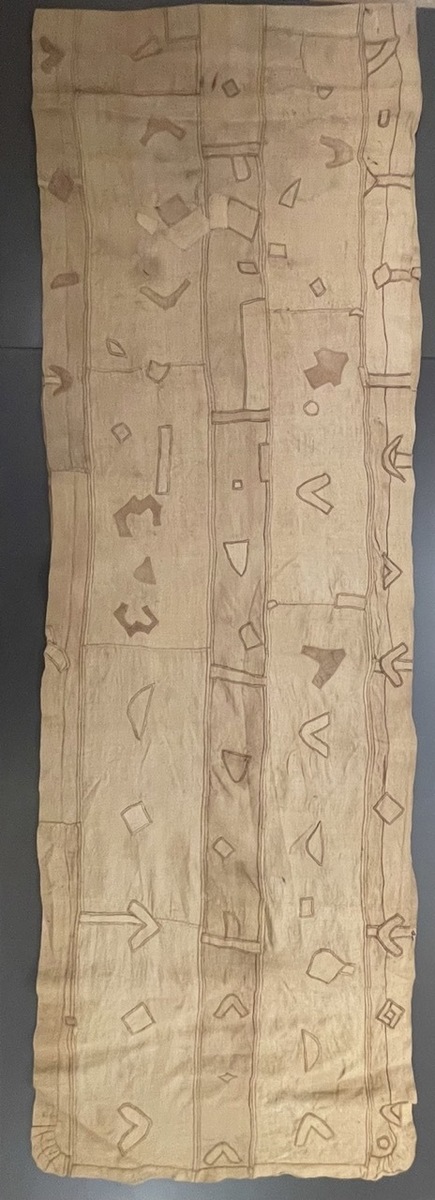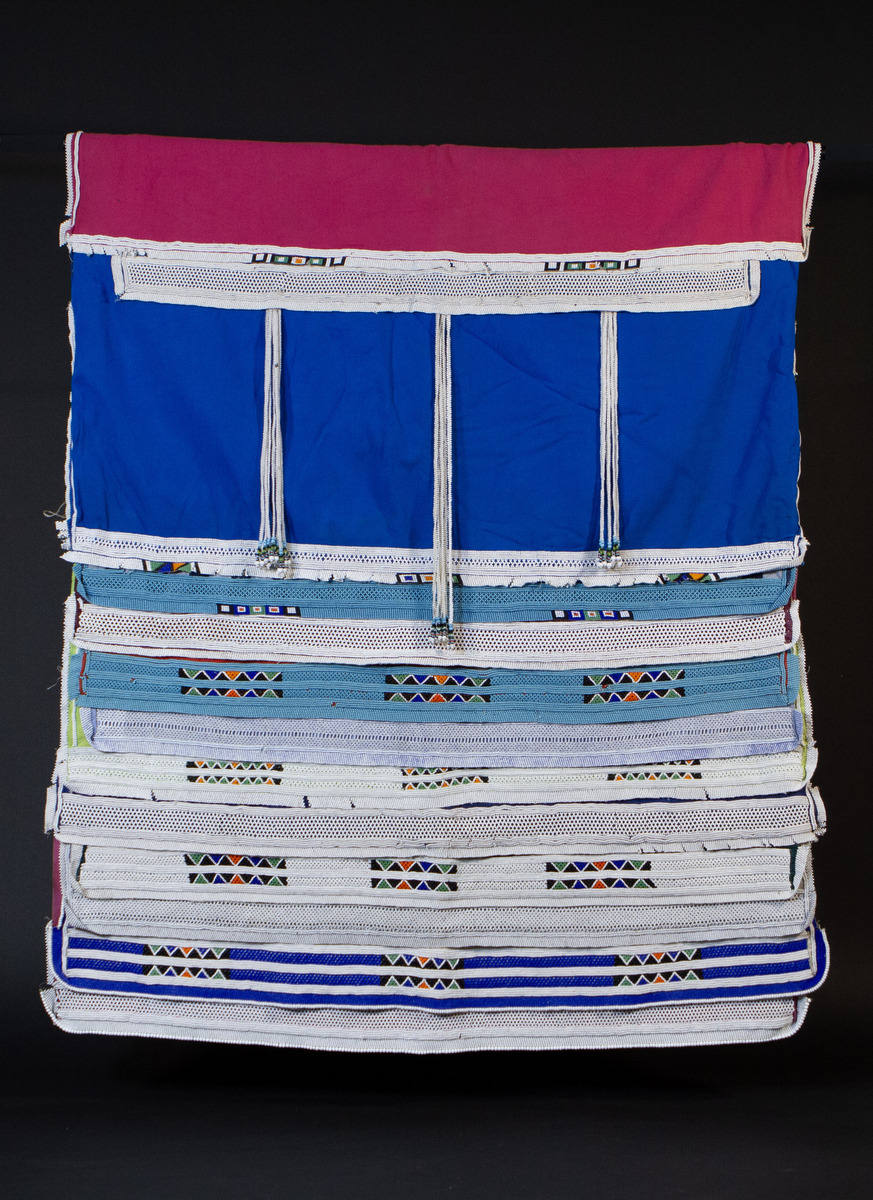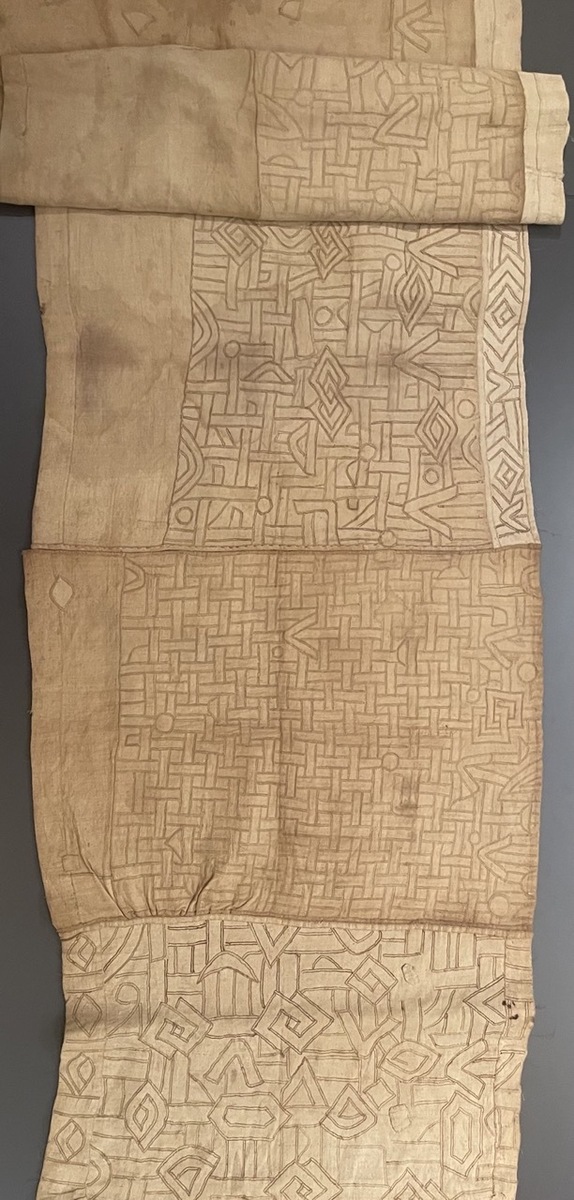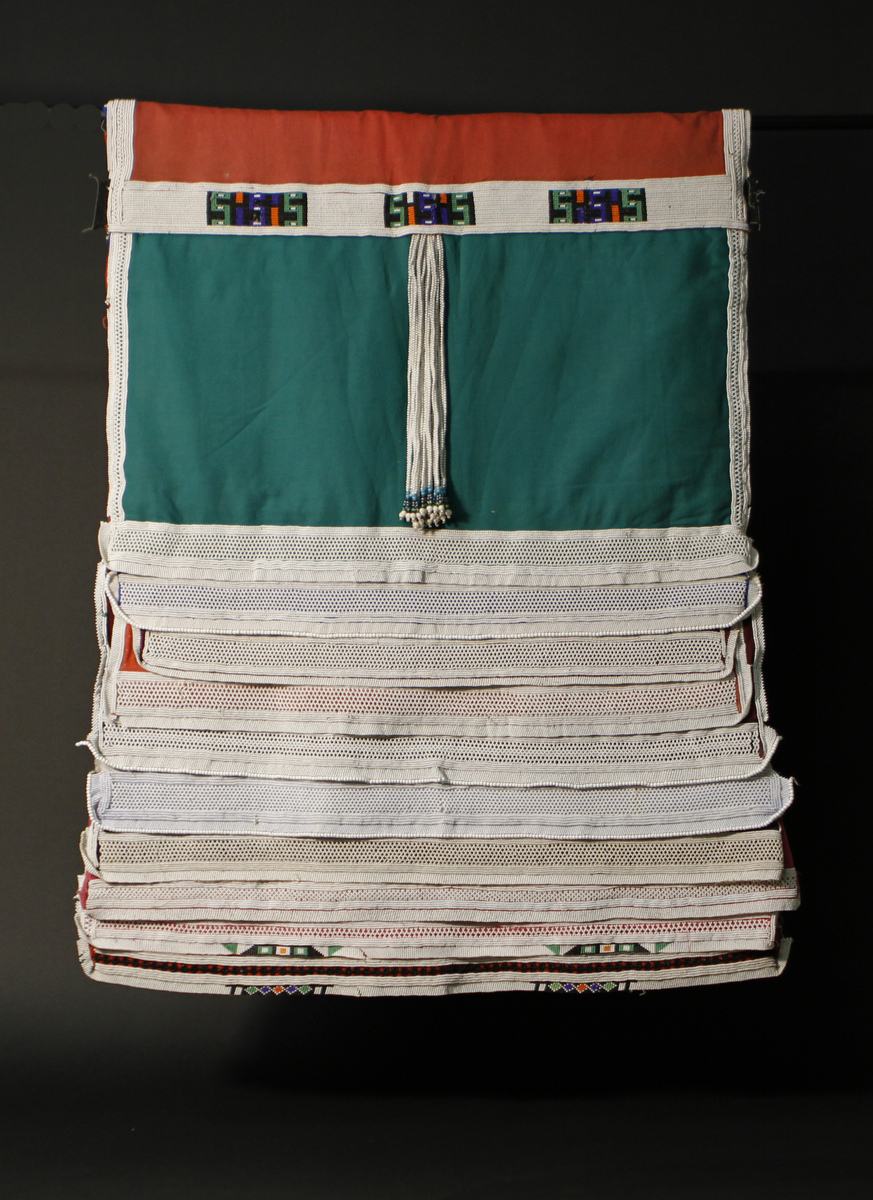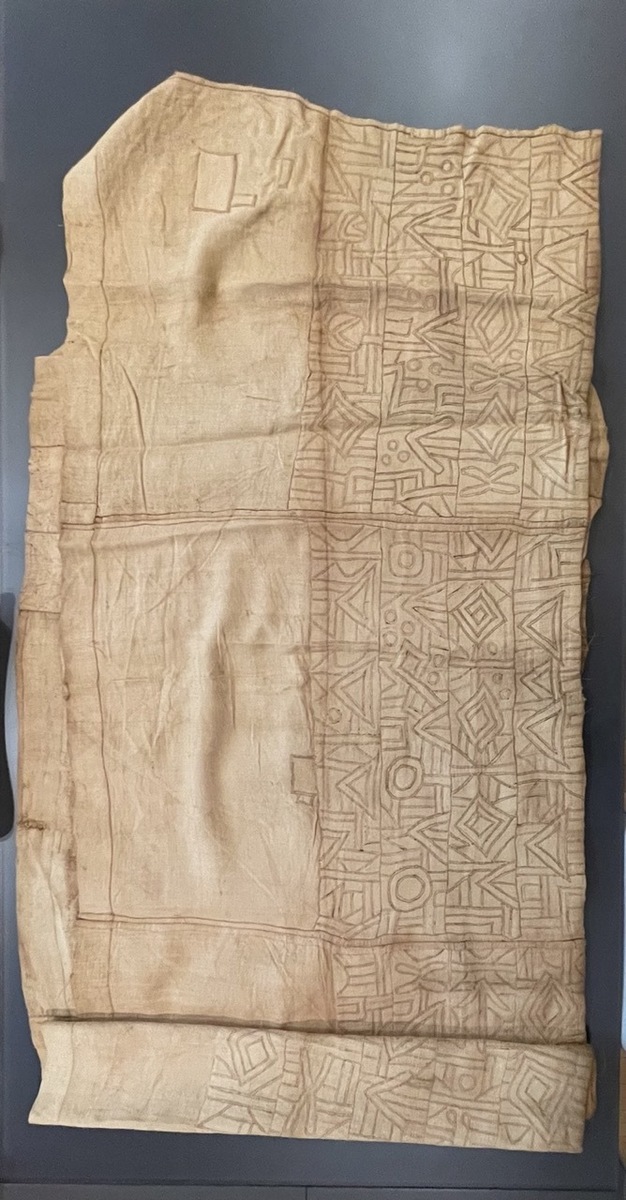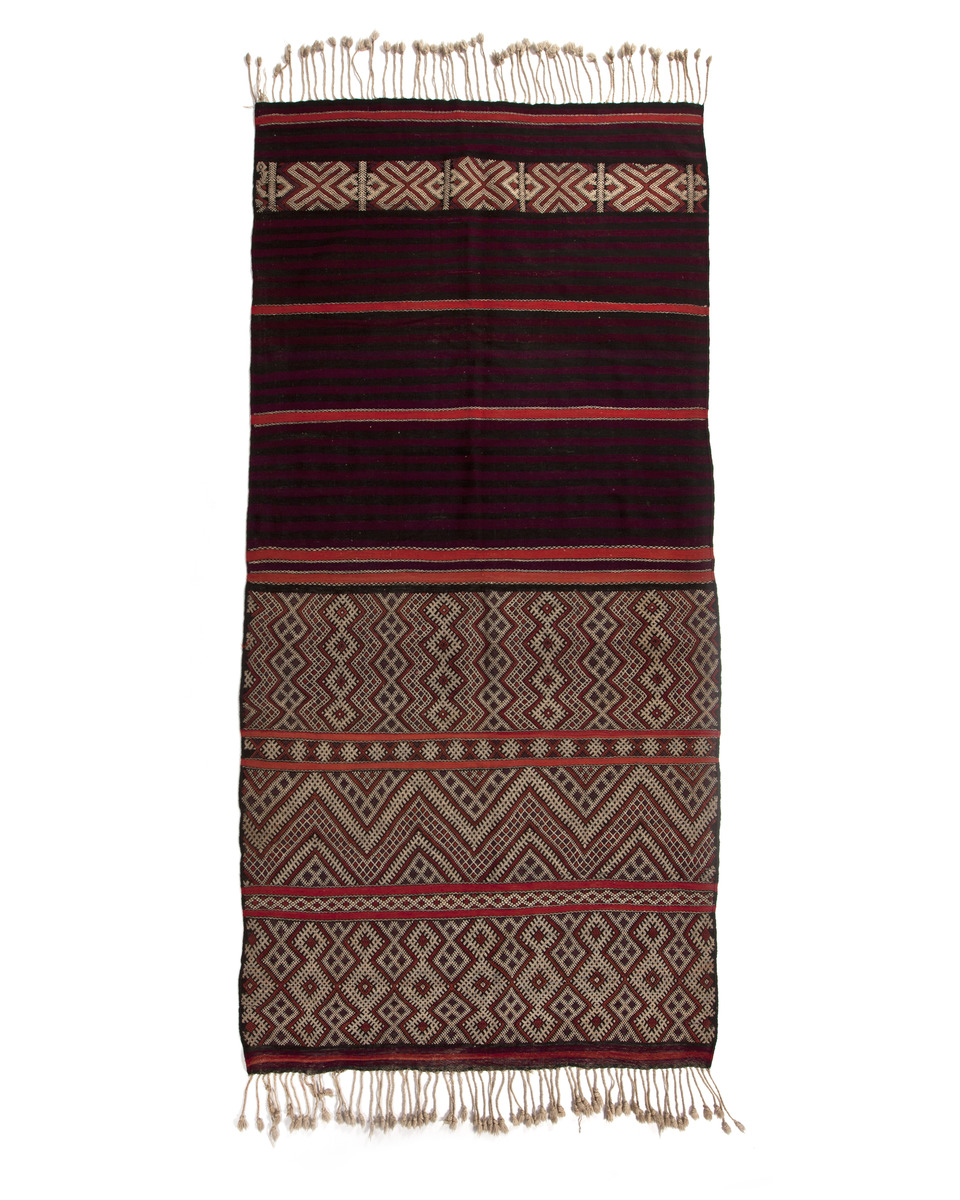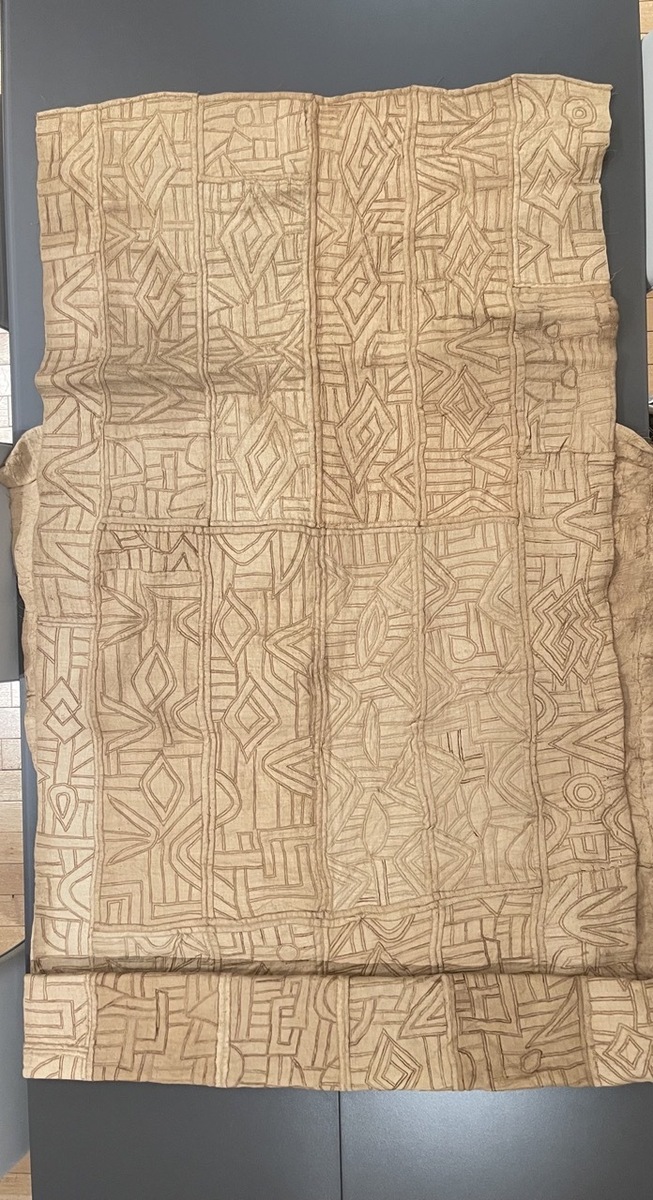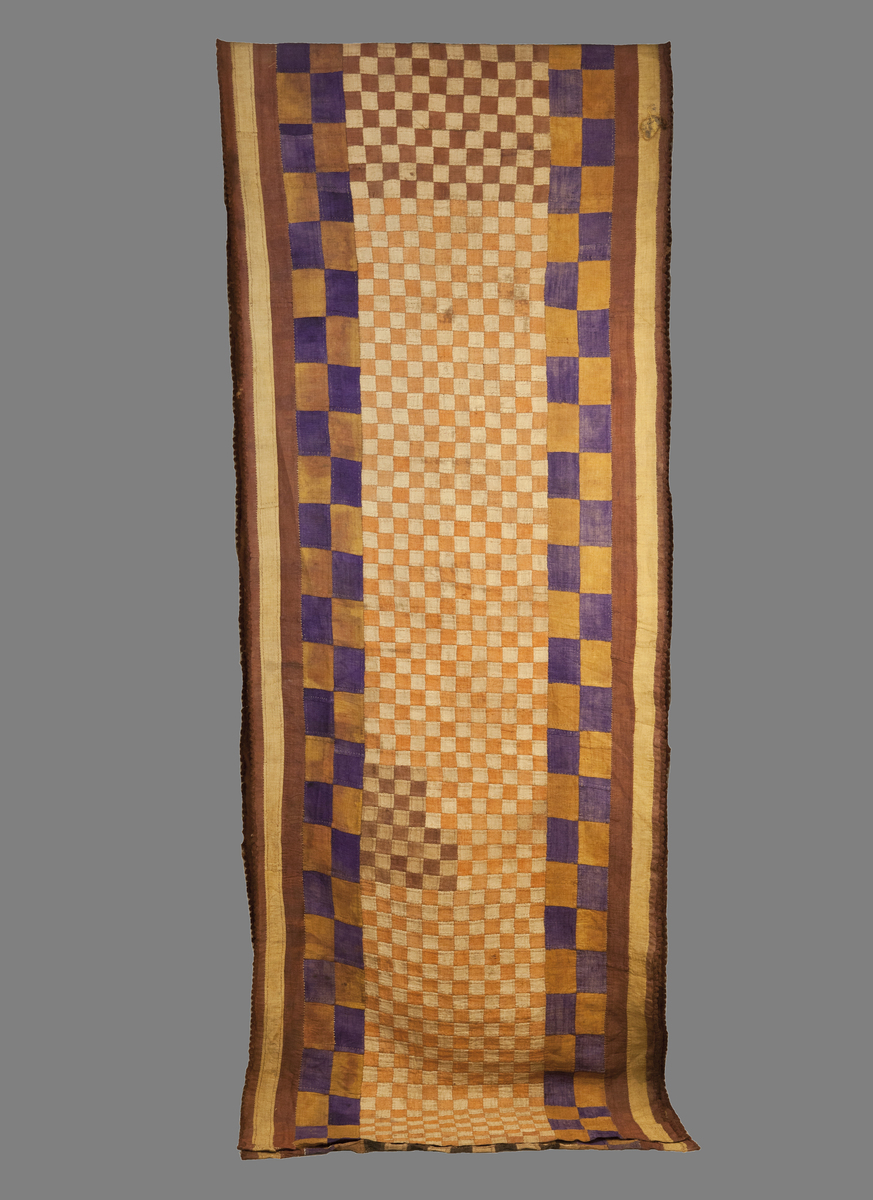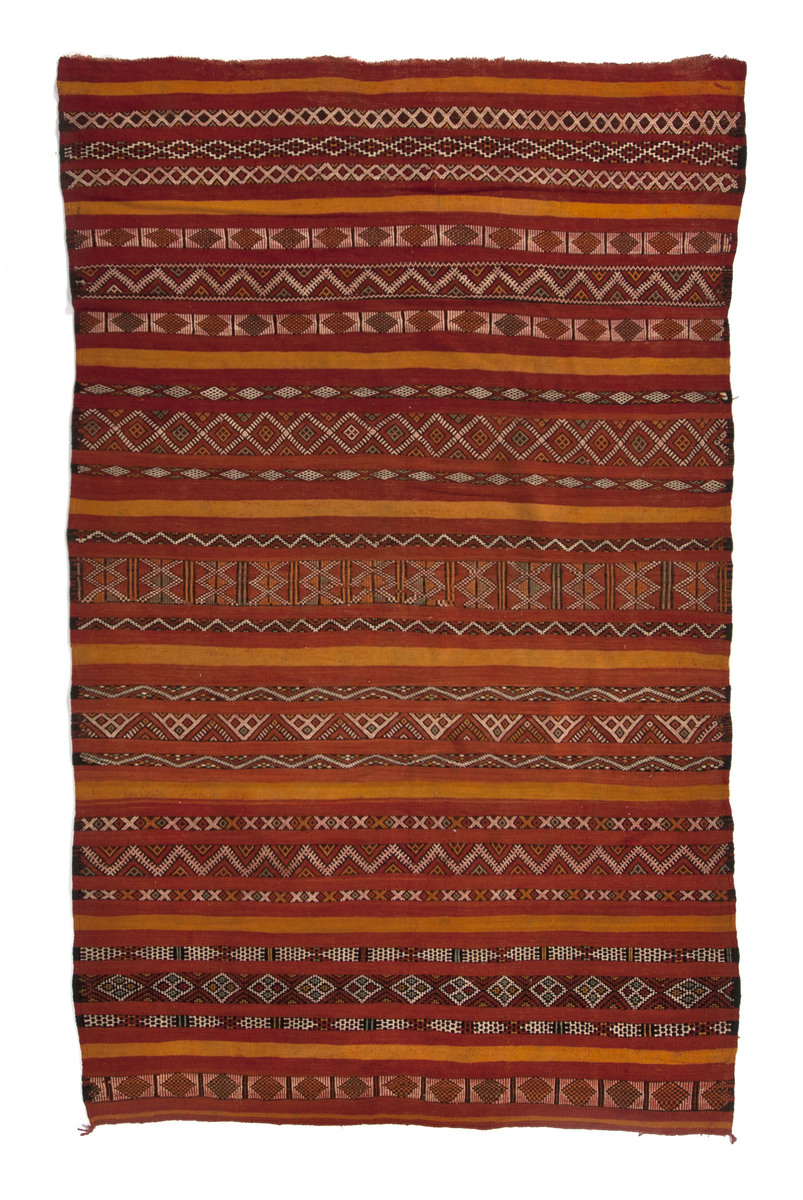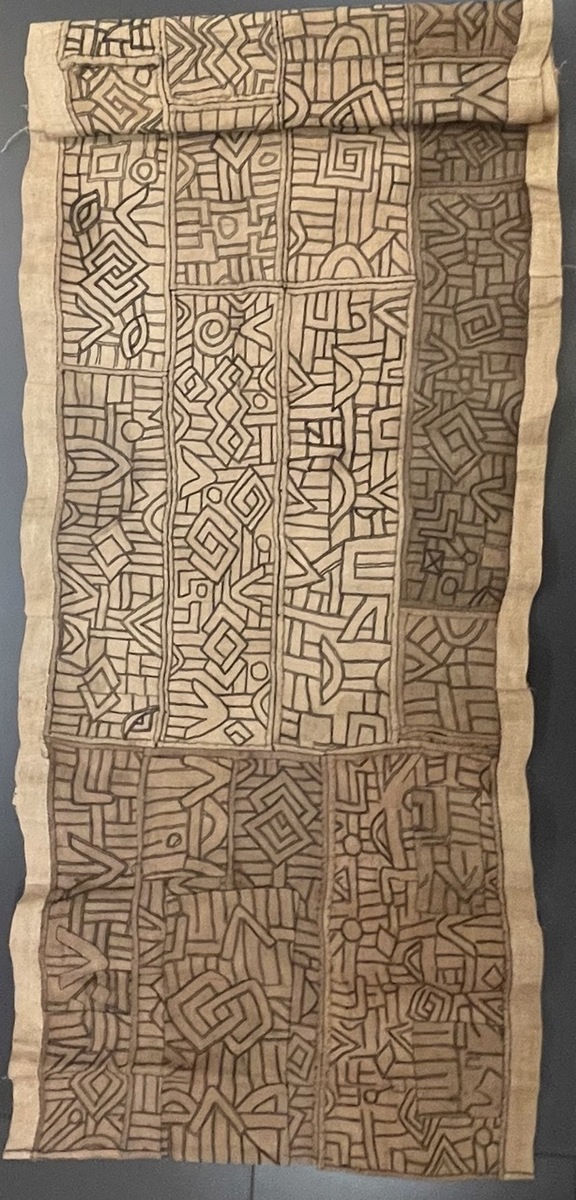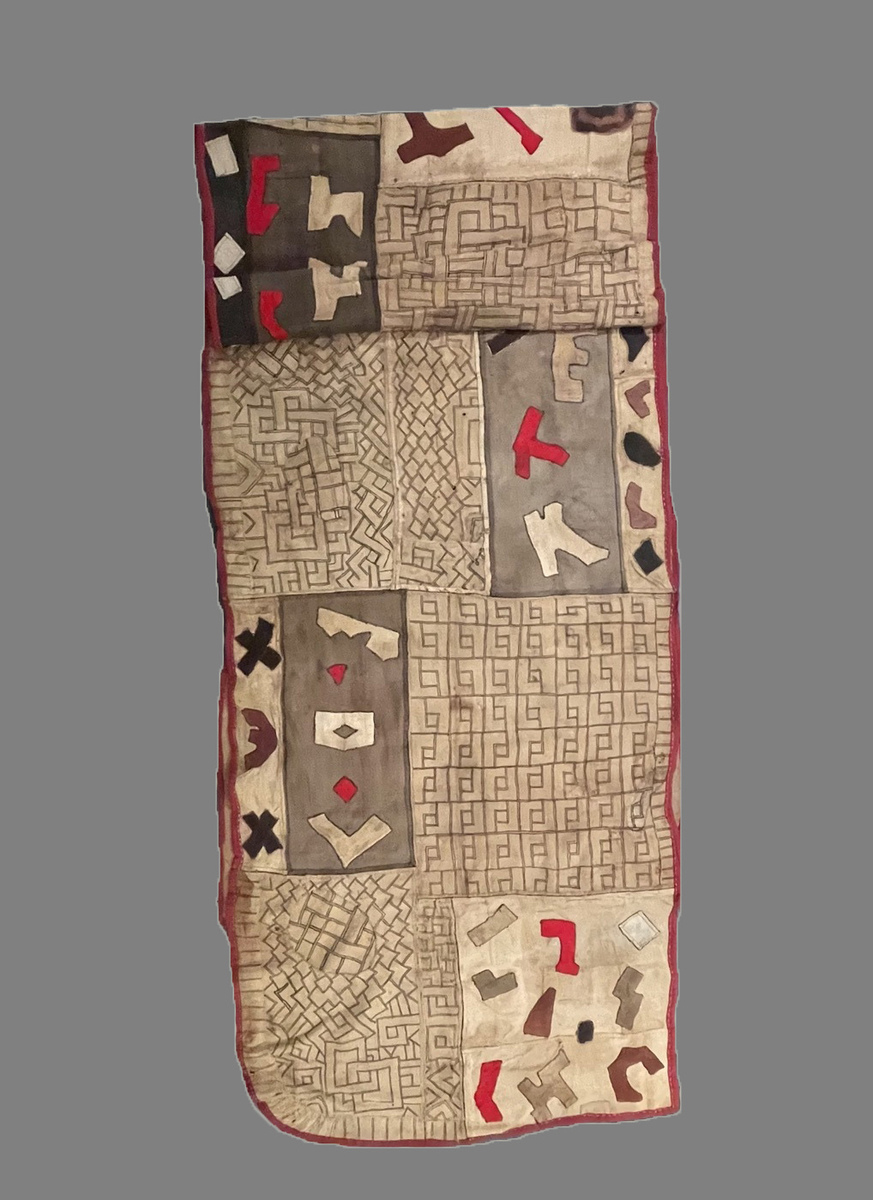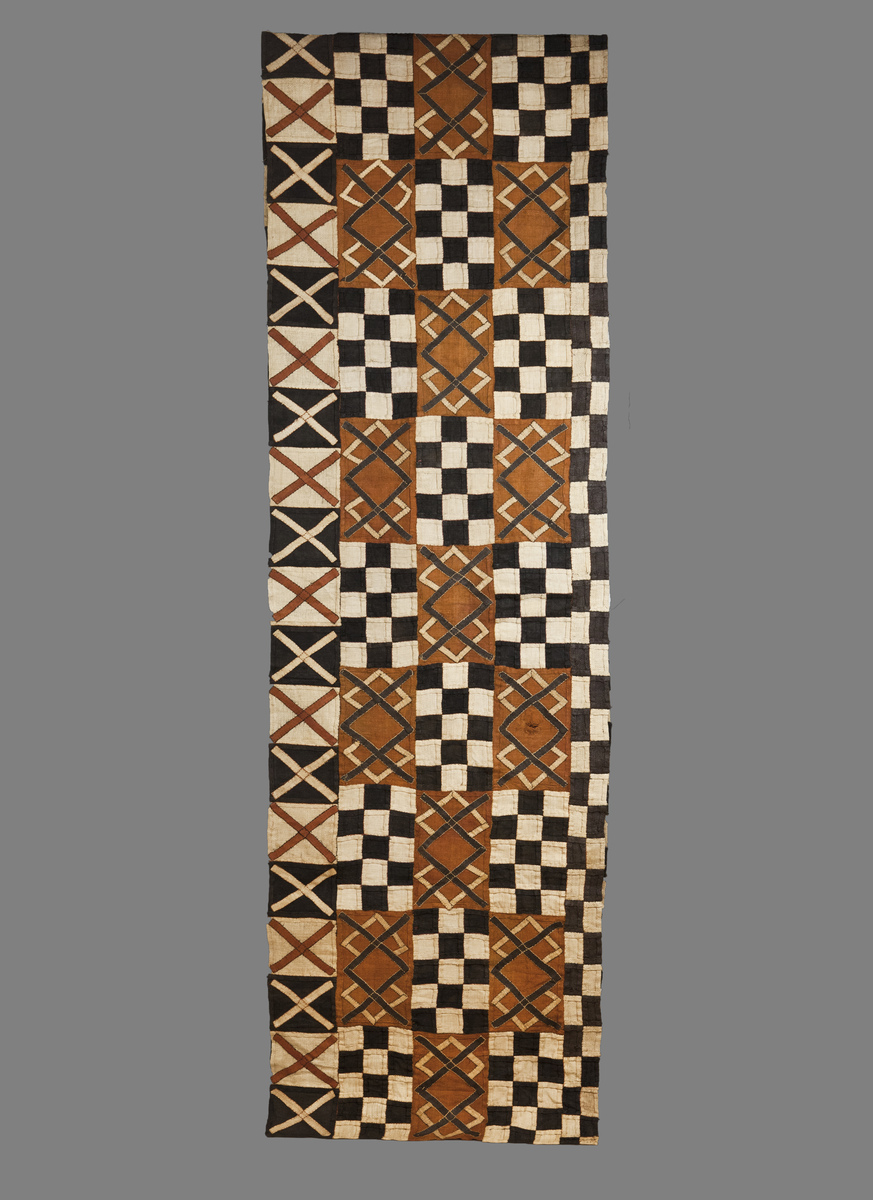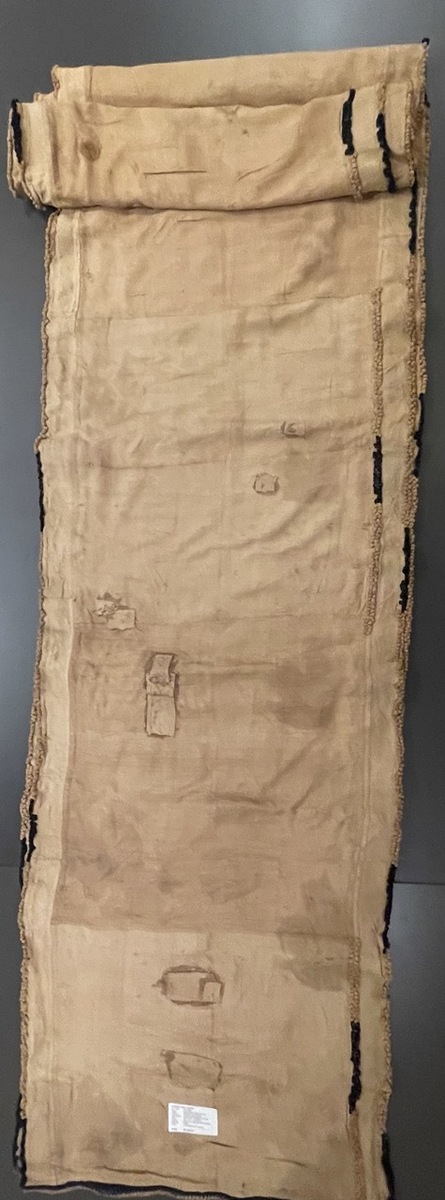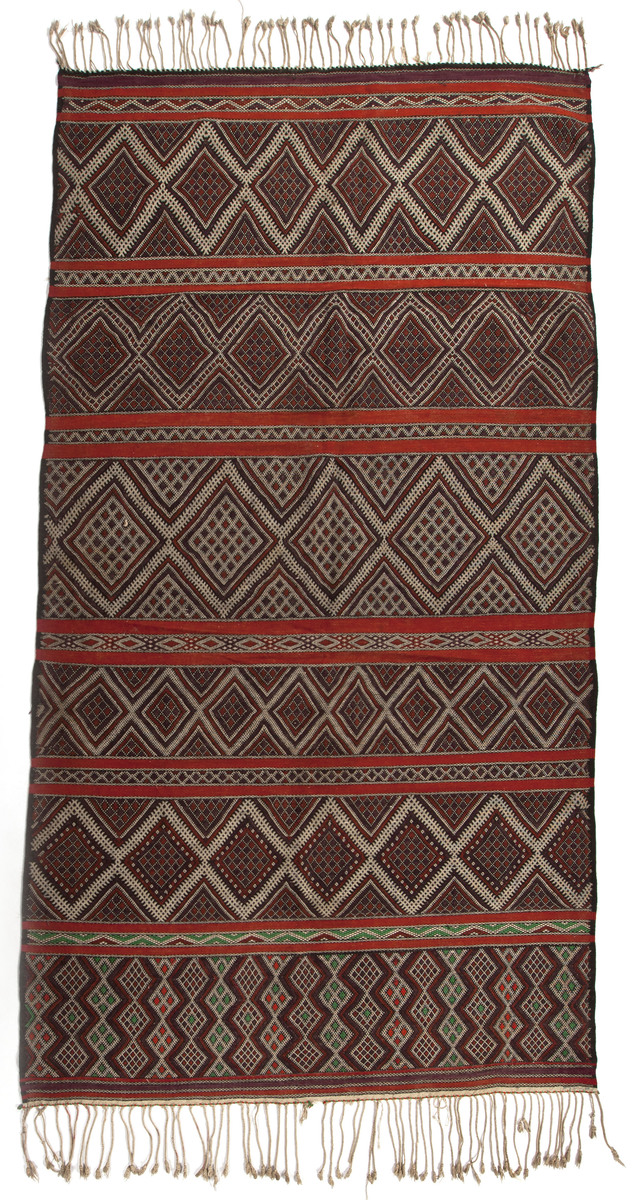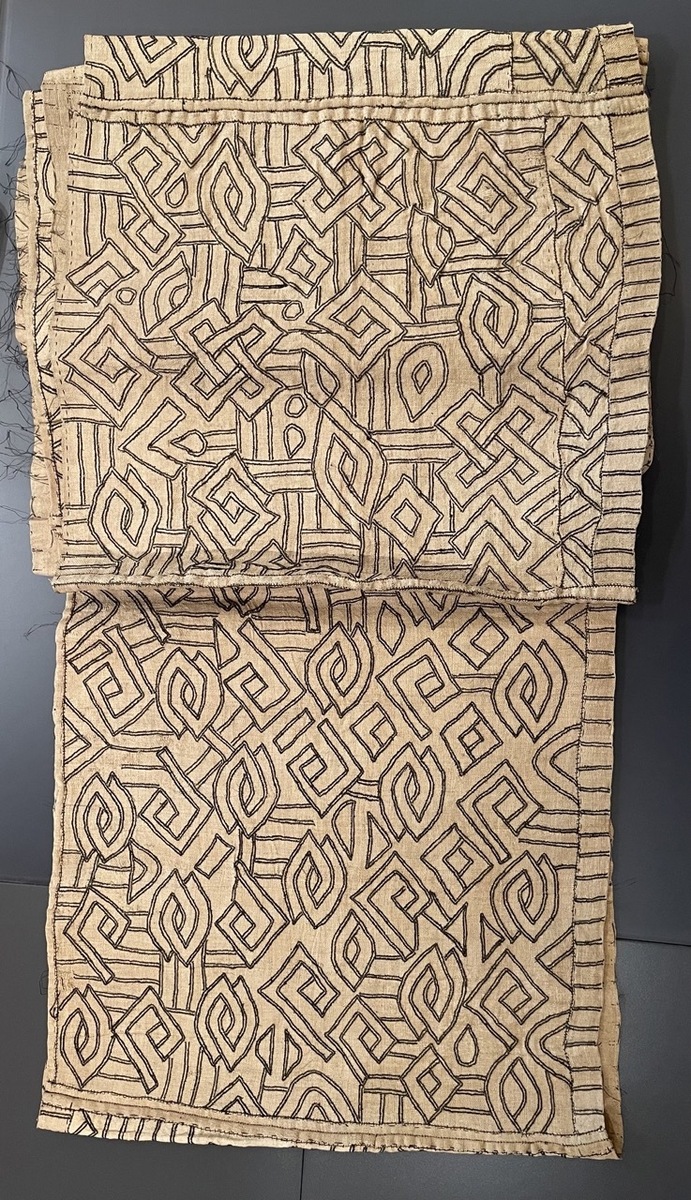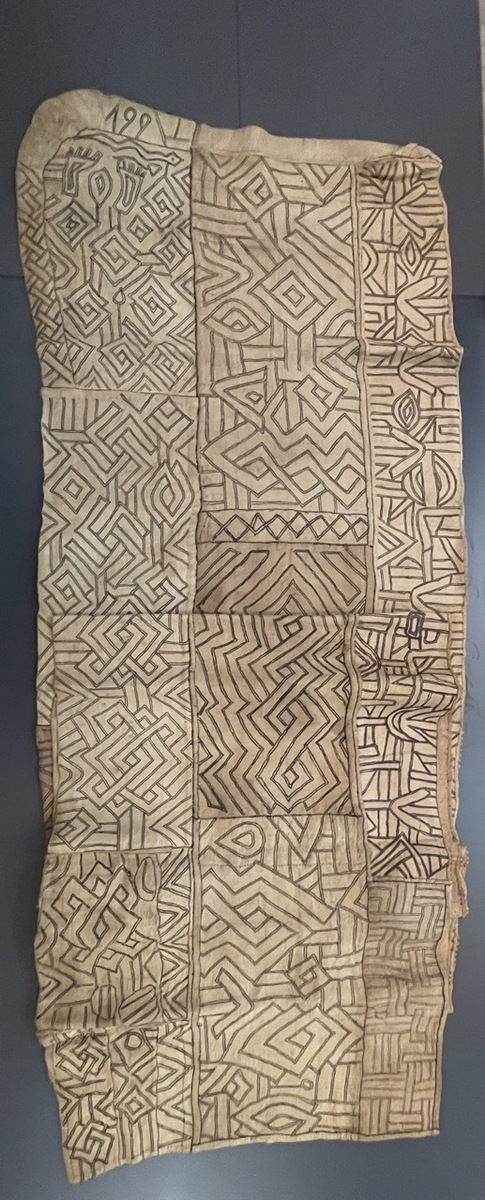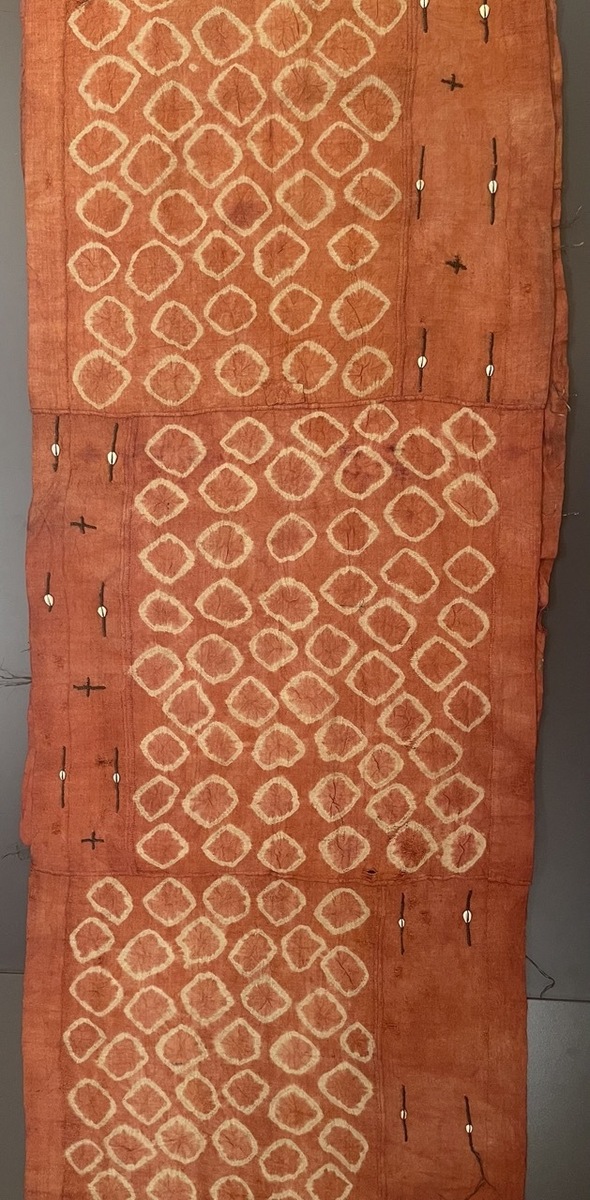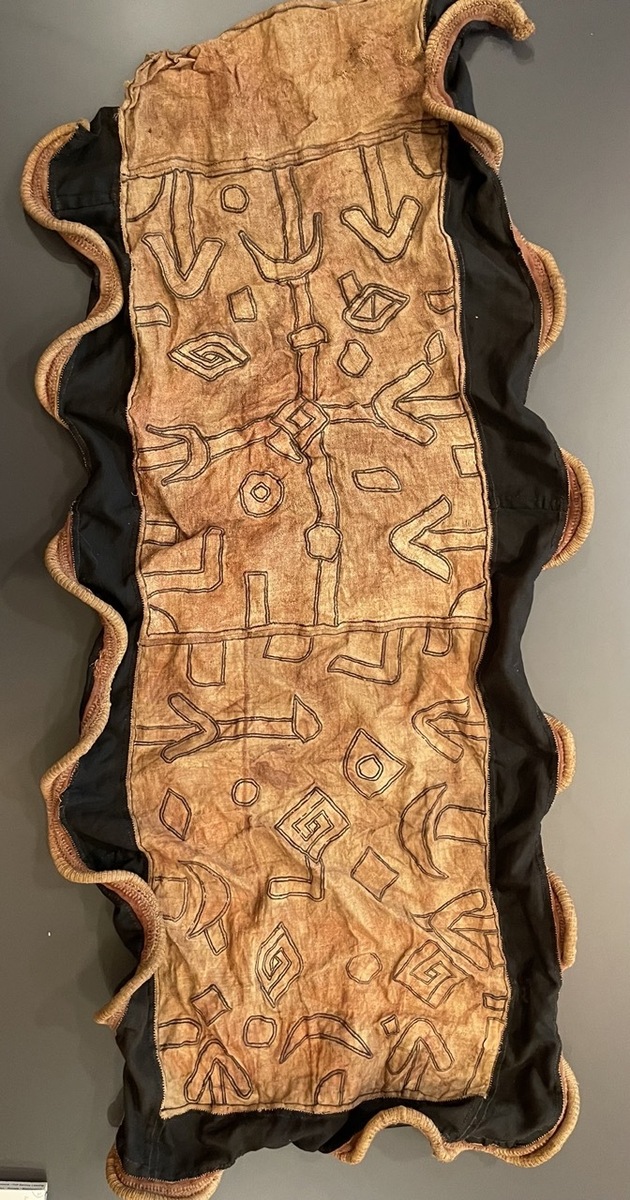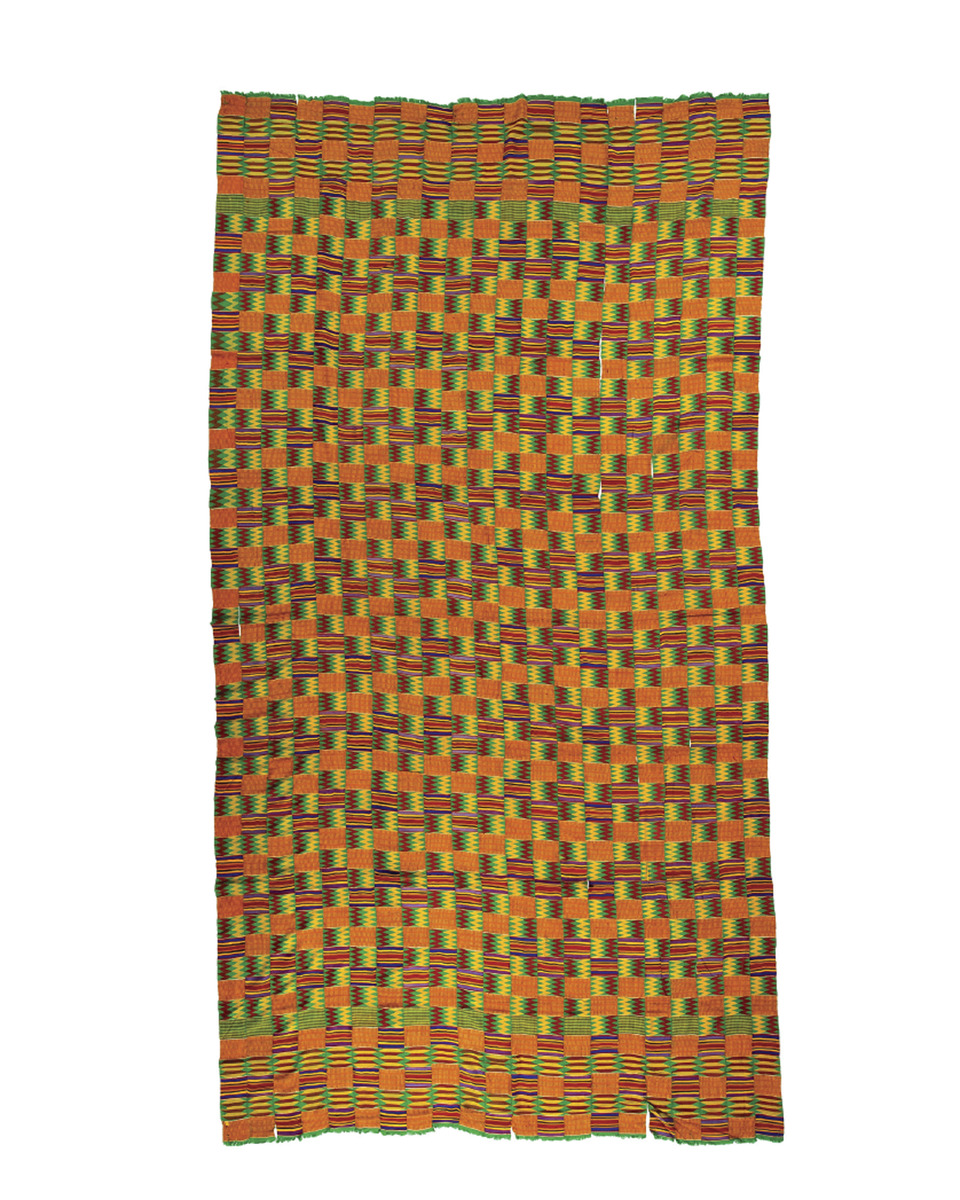Description
Kuba People, Busong Kasi River Region, Democratic Republic of the Congo
Raffia palm fiber, natural dyes, embroidered applique
This distinguished ceremonial overskirt exemplifies the consummate artistry of Kuba textile traditions, where innovation in pattern and composition is elevated to the highest form of cultural expression. Woven from raffia palm fibers and richly dyed in a striking palette of ochre, russet, ivory, and deep black, the garment is further animated by meticulously embroidered linear motifs that create alternating vertical bands of geometric splendor.
The interplay of color and form here is neither incidental nor purely decorative: it reflects a profound visual rhythm in which symmetry, balance, and variation coexist in perfect harmony. The bold stripes, filled with angular and curvilinear motifs, exemplify the Kuba designer’s celebrated ability to combine order with creative improvisation.
Such overskirts were worn by women of rank in ceremonial processions, initiations, and dances, their grandeur marking social identity and prestige. Beyond their immediate role in adornment, textiles of this kind held intrinsic value as currency, dowry, and cherished familial property—lavishly displayed at life’s most significant passages, including funerary rites.
European observers, struck by their refinement, often compared Kuba cloth to velvet and silk, marveling at the ingenuity of artisans who transformed the raffia palm leaf into fabrics of such technical virtuosity and visual force.
This ceremonial garment thus embodies the essence of Kuba textile culture: a synthesis of material wealth, social meaning, and artistic brilliance, woven into a masterpiece of enduring beauty.

